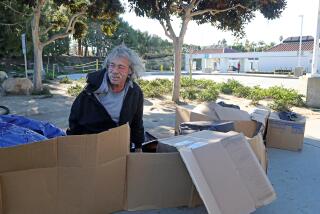New Measure Restricts Housing Around SDSU
- Share via
An ordinance designed to limit the number of students in “mini-dorms” in neighborhoods around San Diego State University was approved by the City Council Tuesday amid concern that the measure may end up in court.
The measure, which has been under study since 1984, was adopted in a 5-2 vote after two hours of heated testimony from residents and students who would be affected by the proposal. Councilwomen Celia Ballesteros and Abbe Wolfsheimer cast votes opposing the measure, and Councilmen William Jones and Bill Cleator were absent.
Wolfsheimer, an attorney, said she favored the ordinance but had serious concerns that “we have a serious 4th Amendment problem here,” which could plunge the city into lengthy and expensive litigation.
Because of a precedent-setting ruling by the state Supreme Court under former Chief Justice Rose Elizabeth Bird in a similar Santa Barbara housing regulation case, Wolfsheimer urged fellow council members to subject the mini-dorm ordinance to more legal review.
But other council members backed Councilwoman Judy McCarty’s plea for a decision after hearings and debate that have stretched over nearly three years.
The new regulations, which will go into effect in about six weeks, require a minimum of 80 square feet of sleeping space per person; at least one bathroom for every four tenants; additional off-street parking, and other restrictions that opponents say will lead to the eviction of about 600 SDSU students living in rented housing off campus.
Tom Cordova, president of the SDSU Inter-Fraternity Council, said on-campus student housing would be ruled unfit under the new mini-dorm law.
The ordinance applies only in the SDSU vicinity and only to single-family houses that contain rental units.
About 200 university-area homeowners supported the legislation, relating tales of weekend beer busts that brought 3,000 students to their once-quiet neighborhood.
More to Read
Sign up for Essential California
The most important California stories and recommendations in your inbox every morning.
You may occasionally receive promotional content from the Los Angeles Times.










